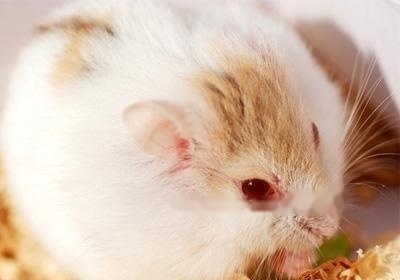
Amber Hamster
Length: 10-12cm
English name: Pere David'
Lifetime: 3-12 years
RockSquirrel( Pere David') alias squirrel, hairy mouse, Diao mouse, stone Mouse, Sweeper, Mauger, Sweeper. It is more alert and likes to inhabit rocky areas such as mountains and hills, semi-arboreal and semi-terrestrial.
Rock squirrels are mainly distributed in Hebei, Henan, Shandong, Shanxi, Gansu, Inner Mongolia and other provinces. Rock squirrels are one of the most important pests in agriculture and forestry in hilly and mountainous areas.
Chinese name: Rock squirrel
Chinese alias: squirrel, hair mouse, Diao mouse, stone mouse, Shaozi, Maogeli, Shaomaozi
English name: Pere David'
binomial method: Sciurus davidianu
Kingdom: Animalia
phylum: Chordate
Subphylum : Vertebrate subphylum
Class: Mammalia
Subclass: Eutheria
Suborder: Squirrel
Family: Sciuridae
Subfamily: Sciurinae
Genus: Sciurinae
Species: Rock squirrel
Distribution: Distributed in Hebei, Shaanxi, Shanxi, Henan, Sichuan, Gansu, Ningxia, Inner Mongolia, Guizhou, Anhui and Hubei, etc.
Adult RockSquirrel The ideal body length should be between 18-25cm, the tail length is close to the body length, and the sparse and fluffy hair on the tail is very beautiful. A pair of piercing black eyes makes people feel very smart.
The rock squirrel has large and obvious ears, a white circle around the eyes, slightly short limbs, fluffy and sparse tail hair, blue-gray back hair, yellow-gray hair on the abdomen and the inside of the limbs, and white mandibles.
The back of the body of the rock squirrel is dark gray with yellow-brown; the ventral surface of the body is orange-yellow with light yellow or light yellow-brown, the tail is fluffy, with obvious white hair tips on the top, sides and distal ends, and the lower center is yellow Brown; eye sockets yellowish-white to yellowish brown; dark brown hairs on the inside and outside of the ears, with a white spot behind the ear that extends back to the sides of the neck, forming a short white streak that is not very obvious; usually has a Leukoplakia; the back of the hind feet is similar or black in color to the back of the body, and the soles of the hind feet are covered with dense hairs without long pacing pads.
rocksSquirrels are medium-sized arboreal and ground-dwelling rodents. It likes to inhabit ditch slopes or hilly rocky places in mountainous areas, as well as rocky areas with few trees. It is also often encountered in places with a lot of gravel and shrubs near the forest edge. It is active during the day and is most active in the morning and around 16:00 in summer. Noon activity was significantly reduced. Often found on rocks and walnut trees. Strong tree climbing ability. Feeds on nuts and other seeds. Likes to eat walnuts, pine nuts, but also eat apricots, mulberries and other berries and their pits. Eating crops in the field. In the vicinity of the village, they often sneak into the house, jumping through the beams and stealing the corn hanging under the eaves and the grain drying on the roof.
rocksSquirrel is regarded as one of the important pests in agriculture and forestry among the people, and its lifespan is usually between 3 and 12 years. Rock squirrels like to eat nuts, like to eat crops in the fields, and often sneak into houses, jumping through beams to steal corn hanging under the eaves and grain drying on the roof.
Rock squirrels not only steal pine nuts and destroy the seedlings and seedlings of Chinese pine, but also invade the farmland to steal a large amount of grain and cause agricultural yield reduction. In spring and autumn, they invade farmland in groups, digging up the seeds of crops sown in spring, and stealing mature crops in autumn.
Cubs in North China live independently in May and June. Female mice mate in March and April, and give birth in April and May. Breed 1 to 2 litter a year, and give birth to 2 to 5 litter per litter. The first litter is hairless, with eyes closed, 7-8 g in weight, and 5-5.5 cm in length. Eyes open at 30d, and leave the nest at 45-55d.